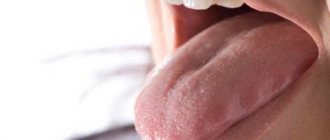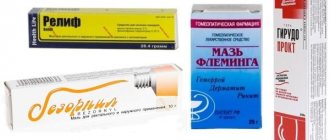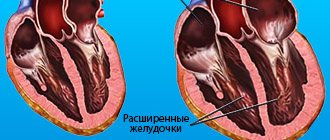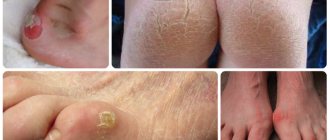The tongue reflects the state of the organs involved in the digestive system.
Changes in the color and structure of its mucous membrane can indicate how parts of the gastrointestinal tract work.
Food particles lingering on the papillae of the tongue lead to the proliferation of bacteria. Thus, a natural plaque is formed.
But, if it turns yellow without exposure to food coloring, you should pay attention to this. After all, the reasons for its appearance can be very serious.
Why does a yellow coating appear on the tongue?
The normal mucous membrane of the tongue is pink, shiny, with taste buds on it. In the morning, it may be covered with a white transparent film consisting of food debris, salivary proteins and traces of certain microorganisms. This plaque is easily removed during cleaning and does not appear again during the day. The film on the tongue has the ability to stain. Among deviations of this kind, yellowish-brown deposits are more common than others.
The causes of this symptom are varied: from harmless staining with food coloring to severe pathologies. The appearance of yellowish deposits in the mouth can result from:
- taking certain groups of medications - iodine-containing drugs, antibacterial drugs, hormones;
- eating foods with appropriate natural or chemical dyes - citrus fruits (grapefruits, oranges), persimmons, lemonades, carrots, fruit juices and fresh juices, yoghurts;
- abuse of tea and black coffee;
- frequent consumption of hot, spicy and spicy foods, alcohol-containing or carbonated drinks;
- smoking tobacco;
- dental factors (caries, gingivitis, lack of proper oral care, poorly selected braces or dentures);
- Late pregnant women face the problem of yellowness in the mouth due to fetal pressure on the digestive organs and the development of gastroduodenal reflux;
- hot weather – in hot weather, these symptoms are considered normal and indicate a lack of fluid in the body.
Experts say that yellow deposits can be eliminated independently only in a few cases: smokers need to give up their bad habit, and lovers of coloring products need to stop consuming them. In all other cases, the appearance of yellowness in the mouth is a cause for concern and a visit to a medical facility.
- White coating on the tongue - what to do and how to treat
- White plaque on the lips in children and adults - causes, treatment with medications and rinses
- White plaque in the mouth - causes, diagnosis and treatment
Pathological causes in adults
The tongue is an organ of the digestive system, therefore, if an uncharacteristic plaque occurs in the mouth, the source should be sought in this area. Yellow coating on the tongue in adults often appears due to problems in the gastrointestinal tract or decreased immunity. The reasons for a yellow coating on the tongue in an adult may be the following:
- liver diseases (hepatitis, cirrhosis);
- lesions of the biliary tract (cholecystitis, cholelithiasis, inflammation of the bile ducts, neoplasms in the corresponding area);
- pancreatitis, pancreatic neoplasms;
- suprahepatic jaundice;
- diseases of the intestines and stomach, these include gastroduodenal reflux, gastritis, gastroduodenitis, peptic ulcer;
- infectious diseases of the upper respiratory tract (tonsillitis, sinusitis);
- glossitis - inflammation of the mucous membrane of the tongue;
- parasitic microorganisms (giardiasis, liver echinococcosis) that settle in the bile ducts and liver.
A yellow coating found on the tongue should worry a person, because such a symptom often indicates problems with the liver. This organ does not have nerve endings, so the first symptoms, such as yellowness on the tongue, discomfort in the upper abdomen (right), appear only as a result of a serious and long-term pathological process.
In children
Parents of infants should be extremely careful, because yellowing of the tongue, skin and sclera of the eyes is a common occurrence during the newborn period (hemolytic disease), when there is massive death of red blood cells, and the immature liver produces bilirubin too intensively. The presence of these manifestations within a few days after birth is not considered a pathology. Nuances for other age categories:
- The coloration of plaque on the child’s oral mucosa is often caused by the introduction of certain foods into the diet, such as carrots and persimmons.
- Sometimes the corresponding color is the result of a child testing the taste of pencils, felt-tip pens, or excessively eating sweets with dyes.
- After eating large quantities of fatty foods at night, by the morning you may experience nausea and a yellowish coating on the tongue.
- The beginning of the development of stomatitis in a baby can manifest itself in the form of a yellow coating on the tongue due to the active reproduction of microorganisms and the release of their waste products.
- In adolescence, more often than in adults, the development of acute respiratory and infectious diseases (measles, rubella) is characterized by the appearance of yellow spots on the tongue.
- A tongue with a yellow coating in a child, combined with indigestion, can signal the activity of an enterovirus infection.
Children, like adults, are susceptible to the same pathologies of the immune system and digestive tract. When, after eliminating banal staining and adjusting the diet, the child’s plaque condition has not changed, then this symptom is a good reason to consult a pediatrician.
What causes a yellow tongue?
Many factors cause a yellow tongue. For example, certain foods and vitamins, chewing tobacco, bacterial overgrowth on the surface of the tongue.
The last factor is the most common. Sometimes yellow tongue develops into black hairy tongue syndrome. This is when the protein keratin accumulates on the surface of the tongue. This layering gives the tongue a sort of hairy appearance.
In some cases, a yellow tongue is a symptom of some disease. Psoriasis, which causes peeling skin, can also cause yellow spots on the surface of the tongue.
Rarely, a yellow tongue occurs due to the accumulation of bilirubin in the tongue. Bilirubin is formed when red blood cells break down. This accumulation of bilirubin is also known as jaundice. The disease is often accompanied by yellowing of the eyes.
Discoloration is rarely fatal, but may indicate gallbladder disease. Another little-mentioned reason is the enlargement and inflammation of nodules on the tongue. This condition is usually accompanied by a build-up of bacteria.
Other risk factors include a weak immune system, prolonged use of dentures, and vitamin deficiencies. Sometimes long-term use of antibiotics and fungal diseases, such as thrush.
In addition to color changes, symptoms include an unpleasant odor, dryness and a characteristic bitter taste in the mouth.
But, be that as it may, the main cause of yellow plaque is poor oral hygiene.
Please note that some mouthwashes contain oxidizing agents. They also color the tongue.
Symptoms of yellow coating on the tongue
To make a correct diagnosis, the doctor will need information about the nature of the deposits, so the patient should note:
- Is plaque easy to remove?
- what is the duration of symptom identification (does not go away for 3-4 days or more);
- consistency (loose, viscous, curdled);
- thickness and intensity of coloring.
The thicker and darker the color of the deposits, the more advanced and serious the pathology occurs. The properties and localization of plaque on the tongue are associated with the type of pathology. It is believed that:
- yellowish-whitish at the root of the tongue means pathological processes in the intestines;
- pale yellow, along the organ, in the middle - gastric ulcers, gastritis;
- dark yellow, along the periphery of the root - pathology of the urinary system;
- dry, located in a thick layer, on the periphery of the anterior region - respiratory diseases;
- yellow-green with teeth marks, more on the left - changes in liver function (stagnation of bile);
- on the right – diseases of the spleen;
- in the form of plaques over the entire surface – glossitis, candidiasis;
- at the top - diseases of the heart and blood vessels.
A coated tongue is accompanied by symptoms of a disease that has caused a change in the color of the plaque. Thus, inflammatory processes in the liver (cirrhosis, hepatitis) lead to disruption of bilirubin (pigment) metabolism. It accumulates in tissues, and the body is poisoned. In this case, patients experience:
- heaviness in the epigastric area on the right;
- yellowness of the mucous membranes and skin;
- bitterness in the mouth;
- weakness, nausea;
- change in the color of urine and feces.
- Pancreatitis in children - causes of acute and chronic, symptoms, treatment and prevention
- Fungal tonsillitis in children and adults - causes, first signs and manifestations, treatments
- Hepareo for liver restoration
Cholecystitis, acute pancreatitis, pancreatic tumors give rise to stagnant processes in the bile ducts and an increase in bilirubin levels. The situation appears:
- yellowing of the skin and mucous membranes;
- paroxysmal pain on the right under the ribs;
- nausea and vomiting mixed with bile;
- fever.
For respiratory diseases (flu, sore throat, scarlet fever), as well as for any pathologies accompanied by impaired nasal breathing, local manifestations and symptoms of general intoxication are characteristic:
- heat;
- rashes on the pharyngeal mucosa;
- decreased performance.
Inflammation of the mucous membrane of the tongue, possibly affecting the underlying tissues (glossitis), as well as stomatitis, are accompanied by:
- ulcers;
- pain due to chemical irritation.
Acute intestinal infections (enterocolitis, salmonellosis, staphylococcal and enterovirus infections) are characterized by:
- intestinal disorders (diarrhea);
- pain in the epigastric region;
- fever;
- weakness.
Disturbances in the functioning of the stomach and intestines (duodenogastric reflux, gastritis, gastroduodenitis, peptic ulcers of the stomach and intestines) are combined with the reflux of bile into the stomach, which causes deposits in the mouth. Pathologies have the following symptoms:
- heartburn;
- belching;
- nausea;
- sucking pain between meals;
- vomit;
- pain in the stomach area.
Severe generalized infectious lesions against the background of reduced immunity (AIDS, sepsis, diabetic coma) manifest themselves:
- high body temperature;
- pale skin
- severe weakness.
What does a yellow coating on the tongue mean?
The outside of the tongue is covered with a mucous membrane on which taste buds are located, thanks to them we feel the taste of food. The epithelial layer of the mucous membrane is capable of growing, becoming thicker and easily sloughing off, forming a yellow or yellowish layer of plaque with different shades. This color of plaque may be due to inflammatory processes affecting the tongue itself, irritation of the tongue by thermal, mechanical factors, infectious processes in the mouth or pathology of the digestive system.
The tongue may become yellowish due to staining from food eaten or drinks consumed. This type of plaque is easy to get rid of - it can be easily brushed off with a toothbrush and will not appear again.
A yellow coating on the tongue may occur due to food staining, or may indicate serious internal diseases
Diagnostics
The causes of yellow plaque on the tongue will be identified only after a thorough diagnosis. To do this, when visiting a doctor, the patient is prescribed the following types of examinations:
- General urine analysis. Reflects the functioning of the kidneys.
- General blood analysis. Shows a decrease or increase in the number of leukocytes and ESR, indicators characterizing the course of the inflammatory process.
- Bacteriological seeding of plaque scrapings for microflora and determination of sensitivity to antibiotics. It is carried out to determine the type of causative agent of the pathological process and the antimicrobial drug to combat it.
- Ultrasound of the abdominal organs. Helps identify pathologies of internal organs.
- Fibrogastroduodenoscopy. This endoscopic examination allows you to confirm the presence or absence of ulcerative formations on the inner lining along almost the entire digestive tract.
Folk remedies for plaque
To get rid of yellowness on the tongue, you can make decoctions of medicinal herbs and rinse your mouth with them. The most effective in this regard:
- Mint.
- Chamomile.
- Sage.
- Flax seeds.
- Oak bark.
Take 2 tbsp. l. any pharmaceutical plant, pour 200 ml. boiling water and cook for about 15 minutes. Let the mixture sit for half an hour and strain.
If you don’t have medicinal herbs on hand, you can make an ordinary soda solution. It will not only help clear your tongue of deposits, but will also reduce the number of microbes inhabiting it. The recipe is simple: mix 2 tbsp. l. soda with 200 ml. warm water and mix the finished mixture thoroughly.
It will not be possible to get rid of plaque only with the help of folk remedies . Don't forget to brush your teeth morning and evening, use antiseptics, eat nutritiously and visit the dentist at least once a year. And then you won’t have to figure out what the yellow coating on your tongue means.
Treatment for yellow coating on the tongue
Yellow coating on the tongue is not an independent disease, therefore, in order to neutralize the symptom, its cause should be removed. Such a manifestation may be the “first bell” of a serious disease of vital organs. There are principles of action when this problem is detected:
- Cleaning the oral cavity should be systematic - before and after bedtime. This should be done with a toothbrush and toothpaste (children can clean with gauze wrapped around their finger).
- You should adhere to a gentle diet: remove fatty and fried foods from the refrigerator, focus on fermented milk products.
- If the patient suffers from bile stagnation, do not forget to take choleretic drugs prescribed by the doctor.
- Treat infectious pathologies (sore throat, candidiasis) if the oral mucosa is caused by them.
- Do not ignore constipation, increase fluid intake, take laxatives.
- Detoxification measures should be carried out only if the source of poisoning is precisely known.
- Visit your dentist regularly for timely treatment of carious teeth.
Drug treatment
In the treatment of diseases that provoke the appearance of yellowish deposits on the tongue, the following drugs are used:
- for better outflow of bile, choleretic drugs are used: Tanacechol, Allohol, Hologon;
- hepatoprotectors are used to restore liver cells: Karsil, Essentiale, Gepabene;
- antispasmodics will relieve spasm of the smooth muscles of the bile ducts for better excretion of bile: Atropine, Magnesia, No-spa;
- Central dopamine blockers will help improve the contractility of the stomach and intestines and cope with gastro-duodenal reflux: Cerucal, Reglan;
- for bacterial tonsillitis, stomatitis, cholecystitis, antibiotics are selected from the appropriate groups: cephalosporins, macrolides;
- the fight against fungal infections of the oral cavity is carried out with antifungal agents: Nystatin, Fluconazole;
- therapy for parasitic infection is carried out with the following drugs: Vormil, Pirantel;
- for pathologies of viral origin, it is advisable to use antiviral drugs: Altevira, Introna A;
- detoxification therapy includes the administration of adsorbents: Polysorb, Sorbex, Enterosgel, intravenous administration of glucose, saline, and blood substitutes.
Folk remedies
In the fight against deposits on the tongue, there are a lot of traditional medicines that, along with medications, will help cope with this problem. The most frequently used among them are:
- Infusion of oak bark. To prepare, pour a teaspoon of crushed raw material into a glass of boiling water and leave for an hour or more. The infusion is used for rinsing the mouth; the procedure should be carried out 3-4 times a day.
- A decoction of flaxseed is used in case of abnormalities in the stomach and intestines. A tablespoon of plant seeds is boiled for 10 minutes. in 300 ml of water. The decoction is infused for at least 15 minutes. and drink 100 ml 2 times a day before meals.
- An infusion of a mixture of dry leaves of chamomile, mint, and strawberry has a disinfecting and healing effect. It is prepared from 1.5 tablespoons of substrate, which is poured with 250 ml of boiling water and infused in a thermos for at least 60 minutes. Rinse your mouth with the resulting infusion after each meal.
How to get rid
The appearance of yellow plaque is not associated with anything serious if the deposits disappear after hygiene procedures and do not form again after a few hours.
Otherwise, until the disease is established, it will not be possible to get rid of the plaque. Selecting the necessary medications will eliminate the cause and relieve the symptom.
Herbal decoctions
If the reasons lie in insufficient oral hygiene, you can cope with the unpleasant manifestation by rinsing with herbal decoctions:
- A collection of oregano, yarrow, linden blossom and plantain leaves. You will need to take one tablespoon of a mixture of dry herbs. Add the mixture to a glass of boiling water and wait about 2-3 hours. Then drink one third of the liquid. Take the decoction three times a day.
- Flax seed decoction . You will need 2 teaspoons of seeds and about three hundred ml of water. Boil the seed for 10-15 minutes, and then shake the liquid so that the mucus comes off. Strain the broth and take 100 ml in the morning on an empty stomach. The product helps stabilize the digestive system.
- Collection of pharmaceutical chamomile, mint, sage, strawberries . Pour boiling water over the herbs and leave for about half an hour. After this, strain the liquid and rinse your mouth 3-4 times a day.
- Brew a tablespoon of oak bark in 200 ml of boiled water . Cool the broth and start rinsing.
Drugs
Depending on the reasons for the appearance of yellow plaque, drugs with different medicinal properties are prescribed.
- Choleretics, such as Allochol, Cholenzym, Tsikvalon, Holosas, help improve bile flow and increase the formation of bile acids. They help improve the condition of hepatitis, cirrhosis, biliary tract diseases, and pancreatitis.
- Antacids are used to treat duodenogastric reflux. They relieve a person from unpleasant symptoms by neutralizing gastric acid. Examples of such products: Rennie, Almagel, Gastal, Maalox.
- Since during acute intestinal infections rapid development of pathogenic microflora occurs in the body, it is necessary to take probiotics. Among them are Lactobacterin, Linex, Hilak-Forte.
- If you become dehydrated as a result of an acute respiratory infection, you need to take anti-inflammatory drugs. The most famous of them are Ibuprofen, Nurofen, Ketorol.
- Antibacterial and antifungal medications will help remove inflammation on the tongue. Among them are Chlorhexidine, Actovegin, Nystatin.
Only a specialist can determine the true reason why a yellow coating forms on the tongue. Therefore, if this symptom appears, you should make an appointment with a therapist or surgeon for a consultation. Self-medication can lead to dangerous consequences.
Prevention
If a persistent yellowish coating appears on the tongue, go to the hospital to find out the cause. How to avoid it from appearing:
- Careful oral care and purchasing high-quality toothbrushes and toothpastes are the main recommendations of specialists in the fight against plaque on the tongue.
- After eating, it is recommended to rinse your mouth with boiled water; in case of inflammation in the oral cavity, use antiseptic solutions.
- To prevent problems with the digestive system, you should eat nutritiously and in a stable manner.
Causes of yellow plaque in children
Children are most susceptible to various problems with the gastrointestinal tract, metabolic processes, and circulatory system.
Ignoring yellow coating on the tongue can lead to complications
When a yellow coating is detected in your child, household causes are first ruled out:
- the period of introducing vegetables and cereals (yellow coating often remains on the tongue for up to a year);
- inclusion of pigment-containing foods in the diet;
- careless handling of drawing paints (pencils, felt-tip pens) by a child;
- abuse of caramel, carbonated drinks, chewing gum and other treats containing dyes.
If domestic reasons are excluded, then the answer lies in one of the following options:
- hemolytic disease (babies in the first year of life are susceptible);
- hypomotor biliary dyskinesia;
- jaundice (nuclear or physiological);
- giardiasis;
- dehydration characteristic of infectious diseases;
- the use of drugs that have a coloring effect on the mucous membrane.
If you exclude safe factors that are associated with dyes in products or household items, you should consult a doctor for diagnosis.
Ignoring the yellow coating on the tongue can lead to complications, but valuable time for quickly localizing the problem will be hopelessly lost.
In pregnant women
Pregnant women often experience the formation of yellow plaque on the oral mucosa. This is due to the increased load on the liver during pregnancy.
Also, the reason may lie in a change in the secretory function of the stomach, a violation of its motility. Often, pregnant women are diagnosed with various infections that negatively affect the process of bile secretion.
White-yellow coating on the tongue in adults - causes, treatment
The tongue is the mirror of the digestive tract.
The appearance of its mucous membrane reflects the work of all parts of the gastrointestinal system. If a person is healthy, his tongue is pink, slightly shaded by a thin, almost imperceptible layer of white coating. If the amount of plaque on the tongue increases and/or it becomes colored, this may indicate damage to one or another organ.
A yellow coating is, first of all, evidence of diseases of the gastrointestinal tract and liver. So, the lighter and thinner the plaque, the earlier the stage of the disease.
Yellowing of a small thickness with a yellow coating should be taken as evidence of the penetration of infectious foci into the body. A slight yellowing of the plaque in hot weather is normal.
Yellow or creamy coating on the tongue and liver disease
Often a yellow coating on the tongue is the first sign of the onset of hepatitis. Inflammation of the liver is a consequence of a combination of many factors: attacks by pathogenic microorganisms, an excess of toxic substances.
The course of the disease is complicated by the abuse of alcoholic beverages. There comes a period of general weakness and fatigue. In the right hypochondrium, pulling pain impulses are often felt - a consequence of the enlargement of the organ. Bilirubin enters into atypical chemical reactions, intoxication of the body occurs, as a result of which a yellow pigment stains the urine. The skin and vitreous body of the eye also acquire an uncharacteristic shade. The tongue becomes yellow or becomes covered with milky yellow spots of varying intensity.
Liver cirrhosis is marked by the formation of nodules on the underlying tissue that compress the bile ducts. The result of such a violation is a failure in the production of bile substance, and the outflow of bile becomes difficult. Pathological inclusions form in an organ that is unable to perform a hematopoietic, detoxification function. Protein metabolism occurs according to a different scheme: all breakdown products of protein compounds enter the circulatory system. Itching appears, areas of the skin take on an ocher color. At the initial stage of the disease, the tongue becomes dark yellow; in some patients, the coating acquires a light brownish tint.
Experts also note a change in the color of the tongue in cases of liver cancer; the upper surface of the organ becomes matte and often acquires a color ranging from light cream to rich dark yellow.
Ways to eliminate bitterness in the mouth
0
Source:
The method of eliminating the bitter taste depends on the cause that caused it. Most often, drugs are prescribed to normalize the functioning of the liver and gall bladder, such as Essentiale, Allochol, Ursosan, Hepabene. After preliminary consultation with your doctor, you can also resort to folk remedies. So, vegetable juices - potato, carrot, beetroot, cucumber - have proven themselves well in normalizing the functioning of the digestive system. In addition to juices, herbal infusions and decoctions for rinsing and drinking are effective for bitterness. Melissa, mint, oregano, and thyme are suitable for rinsing, and viburnum, chamomile, hawthorn, and calendula are suitable for oral administration. Adjusting your diet can also help get rid of bitterness. It is advisable to reduce the consumption of fatty, fried, smoked, sweet foods, drink as little alcohol as possible, use seasonings and spices without fanaticism, and eat flour and starch-containing foods in moderation. In any case, you need to carefully listen to the body’s signals, such as bitterness, do not ignore them and promptly consult a doctor for diagnosis and prescription of effective treatment.
Why does bitterness occur predominantly in the morning, and not in the afternoon or evening?
0
Source:
The main factor is physiology. Many people involuntarily open their mouth during sleep, causing dryness, against the background of which bitterness is felt especially acutely. Morning hygiene procedures and plain water usually quickly eliminate discomfort. If the body does not produce enough saliva, the digestion process slows down, which provokes the appearance of an unpleasant odor and bitterness. Therefore, after brushing your teeth in the evening, it is recommended to rinse your mouth with salted water: it will prevent the appearance of plaque, bitterness and unpleasant odor. A bitter taste in the mouth in the morning may also indicate the inability to freely move liver secretions through the biliary tract due to prolonged exposure to a supine position.
Preventive measures
• daily hygiene measures;
• to give up smoking;
• reducing the consumption of fatty foods;
Thus, for us, language is not only speech and food processing, but also, a kind of doctor, who will always help diagnose the functioning of internal organs. All tongue warnings must be taken seriously and measures must be taken promptly to eliminate the disease causing the plaque.
The article is advisory in nature and does not replace an in-person consultation with a doctor.
Possible problems with the gastrointestinal tract
The process begins with inflammation of the gastric mucosa. This leads to the appearance of gastritis. In this condition, plaque on the tongue is localized in the central part and has a gray, yellow, or white color.
To make a diagnosis, it is necessary to conduct laboratory tests and collect the patient’s medical history. The patient may complain of heartburn, heaviness in the abdomen, nausea, lack of appetite, and belching.
If not treated promptly, further inflammation can lead to the formation of ulcers. In this case, the tongue is very hyperemic, the coating is gray and yellow. Hypersalivation is observed.
Symptoms
Yellow plaque can be a symptom of many infectious diseases of the gastrointestinal tract, oral cavity and nasopharyngeal mucosa. Among the most likely are candidiasis, glossitis and dysbacteriosis.
Glossitis
With glossitis, the tongue becomes covered with a thick yellow film, changing its color and structure. The main complaints with glossitis are painful chewing and loss of taste. With further spread of the infection, the tongue swells and enlarges, speech deteriorates, and saliva increases many times more. It becomes impossible to eat. The swallowing process will also bring discomfort.
Candidiasis
Sometimes a child develops a yellow coating with a greenish tint on the root of his tongue. This happens if pathogenic bacteria and fungi actively multiply on the teeth and in the oral cavity. One of the reasons is candidiasis.
Dysbacteriosis
Dysbacteriosis is accompanied by a yellow-brown coating. The film will not only have a changed shade, but will also become very dense and thick. If pathological processes occur in the digestive tract for a long time, the deposits acquire a gray tint over time.
Self-examination to identify the cause
Having noticed a yellow coating, you need to evaluate it:
| Criteria | Description |
| Location | Does the change affect the entire language or specific areas? The localization of the plaque indicates which diseases played a role in this. |
| Fit tightness | If the plaque is difficult to remove, and during treatment the areas underneath it hurt and begin to bleed, you should immediately consult a doctor. |
| Thickness | The larger the layer of plaque, the more likely it is that a person has developed the disease. |
| Duration | If the color does not return to normal within a few days, then the problem is that there are problems with the body’s functioning. |
The location of the plaque may also hint at the cause of yellowing (but it is impossible to make an accurate diagnosis based on this parameter).
The doctor or patient needs to carefully examine its location:
- There may be cracks in the deposits, which confirms the development of gastritis or other malfunction of the stomach or intestines.
Plaque at the root of the tongue. If yellowing has formed at the root (at the place of its attachment), this is a sign of enterocolitis or nephritis (i.e., it’s time to visit a urologist). - In the middle of the tongue. When formed in the middle, it is a symptom of ulcers and gastritis, increased stomach acidity. There may be cracks in the deposits, which confirms the development of gastritis or other malfunction of the stomach or intestines. If no other changes are noticed, and only a thin coating is present (possibly with a grayish tint), then the disease is in the initial stages, when it is easy to cure. You should change your diet and regimen, reduce physical activity, and soon the body will recover.
- Around the edges. The location indicates the following: If the left edge turns yellow, the liver is affected
- The right edge projects the state of the pancreas.
- The colored tip indicates pulmonary diseases (especially important for smokers; it is a signal to stop the bad habit).
If the color is distributed evenly over the entire surface, you need to check for problems in the hepatobiliary system.
Other types of plaque and what they mean:
- The yellow-green color of the tongue is a clear sign of stagnation of urine, problems with the biliary tract and liver.
Plaque with teeth marks. Having noticed such a change, we can make a preliminary conclusion that the patient has enterocolitis. - White-yellow coating. Most often, this is a sign of the presence of an inflammatory process in the tongue itself, called glossitis. It is characterized precisely by the white-yellow color of this area. The appearance of ulcers on the surface is noticeable, and it becomes more difficult to chew and swallow food. The disease affects the oral cavity. Therefore, the dentist takes care of the treatment.
- Yellow-green coating. The yellow-green color of the tongue is a clear sign of stagnation of urine and problems with the biliary tract and liver. This color can last for more than 5 days, so if you notice this, you need to urgently go to the treating specialist.
- Yellow-brown coating. Brown shades are formed in the presence of: Pathological changes in the respiratory system.
- Chronic alcoholism (stays for many years) or long-term smoking.
- Lack of B vitamins.
- Acute inflammatory process.
- Malfunctions of the gastrointestinal tract, increased acidity.
Treatment
Having found out what the yellow plaque means and for what reason it was formed, the doctor can prescribe therapy. If pathology has become a factor, then treatment should be aimed at eliminating it, and not at relieving the symptom. If you treat the disease correctly, then all the symptoms will go away. Therefore, doctors, when drawing up a treatment regimen, rely on diagnostic results.
In order to improve the patient’s condition, it is necessary to reduce alcohol consumption, stop smoking, and balance the diet (exclude fried, smoked, fatty and spicy foods).
However, how to remove plaque if it was caused by poor diet or improper hygiene. Doctors advise cleaning your tongue when brushing your teeth. To do this, you can use the same brush, purchase a new one or special attachments. With daily cleaning and rinsing of the mouth, all the unpleasant plaque will disappear.
If the tongue is coated with a yellow coating, then you can use traditional medicine to rinse. As part of this therapy, doctors advise making solutions from natural products:
- mint, sage, chamomile;
- Oak bark.
Drug therapy
Do not self-medicate. Getting rid of external symptoms does not mean a complete cure of the disease. Contact a gastroenterologist. The doctor will carry out a number of diagnostic measures: ultrasound of the abdominal cavity, gastroscopy, blood tests, etc. And based on the results obtained, he will develop individual drug treatment, a therapeutic diet, and give the necessary recommendations.
Advice: exclude fatty, spicy, salty foods, coffee, tea, chocolate, sparkling water, and alcoholic drinks. This will help not only improve the condition of the tongue, remove plaque, but also generally strengthen the entire body.
Folk recipes
If you do not have the opportunity to immediately visit a specialist, then you can try to get rid of the yellow coating on the tongue at home using safe folk remedies.
• A decoction of flax seed will help improve intestinal function. To prepare the decoction, pour 1 tablespoon of flax seed into a glass of boiling water, leave for several hours and take a glass in the morning before meals.
• Infusion of mint, chamomile and sage is used for mouth rinsing. To prepare the infusion, take 1 teaspoon of these herbs, pour a glass of boiling water, leave for about 30 minutes and use for rinsing 3 times a day.
• A healing mixture of natural antiseptics. Mix 1 tablespoon of honey with 1 tablespoon of freshly squeezed lemon juice, thoroughly treat the surface of the tongue with the resulting mixture, and spit.
Remember: if you have a yellow coating on your tongue, treatment will only be effective if the underlying disease is identified and eliminated.











